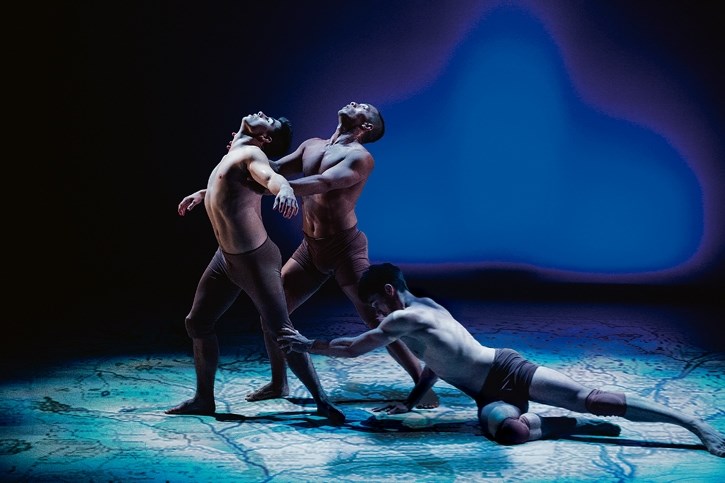Collaboration has always been a lynchpin in the creation and formation of art. Whether through artists getting together for group exhibitions or installations – the magnitude, importance and sheer sublimity art offers is only intensified when many hands join the fold to create.
This can be truly evident through the art performance of dance – a lone dancer is, of course, a beautiful sight to behold, but a group of dancers working in cohesion, as a unit, is an artistic spectacle cultures from the beginning of time have used for expression.
TRACE, a new dance production premiering at The Banff Centre’s Margaret Greenham Theatre on Friday (Aug. 22), is a contemporary work featuring dancers from the 2014 Indigenous Dance Residency who hail from six countries including: Canada, United States, New Zealand, Australia, Mexico, and Fiji. TRACE director Sandra Laronde says the exploration and concept of origin being traced through the art of dance has been a fascinating journey for the entire group.
“It’s very interesting looking at contemporary dance and exploring indigenous connections to ancestral origins and all things traceable and then looking at TRACE as our footprint,” Laronde said. “What we leave as our legacy, a thumbprint left behind, our traces of language or knowledge and wisdom, traces of culture – basically, everything we touch in a way can leave a trace.
Laronde says TRACE features a theme that is both universal and at the same time very unique and distinct through the work of indigenous artists, and the sheer vitality dance brings overall was an anchor for the international dancers.
“There’s even a memory that’s in the body and something quite uplifting when people work with the body, in dance in particular. There’s a vitality that lives in that and I don’t know if you find it the same way in any other art form,” said Laronde.
“It’s such a primary form; movement is the first thing we do, it’s our primary impulse, and before text our origin goes back to movement. That has so much positivity, vitality and beauty in it and I love that it can be conveyed to an audience and dance is also so much about the image and obviously music. It has its own way of telling a story, sometimes abstract, sometimes linear.”
The dancers applied for the indigenous residency, with eight professional and four foundational dancers taking part in the production.
“The eight professionals are who you’re going to see in the dance production,” Laronde said. “It’s basically looking at us being together and coming up with the people in the room and the choreographers and the director and how we mine this very rich terrain of TRACE and what that means culturally, what that means emotionally and individually.
“Right from the beginning, they knew the expectations were high. We were really about raising the indigenous artistic bar higher and higher, so they know there’s a lot expected of them. If you get that out early and remind them, most people will attune that, most people will try and reach that and sometimes surprise themselves and surpass that.”
A regular work day for the dancers in pre-production would run from 9:30 a.m. to 5:30 p.m. with an hour and half off for lunch and then restart again at 7:30 p.m. and go to 9:30 p.m.
“We’re integrating leadership into the process of this for people that have and show leadership potential, so there’s leadership that’s integrated into it. We have cultural information in the evenings, we have health and fitness from an indigenous perspective and what that looks like,” Laronde said.
“It’s a combination of dance and looking at the whole individual as well, a very demanding, difficult and intense schedule. I think the biggest thing is we want to put so much into the four weeks, so the limitation of time is our biggest challenge.
“I think the anchor is the indigeneity; we all come from an indigenous place and there is common knowledge, common language, common senses of humour and a common worldview even though there are some variations on that. There’s something immediately available to us that helped build a tight-knit group right away and it is that indigenous factor for sure.”




